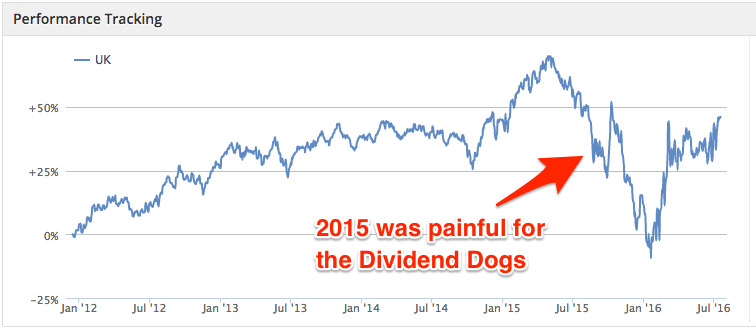The UK’s decision to leave the EU has unsettled the UK economy and efforts to boost growth could be more bad news for the country’s weary savers. With interest rates at a record low of 0.5%, further cuts seemed out of the question just a few months ago. But a wave of uncertainty means that cuts could indeed be coming if the economy takes a tumble. It’s one reason why dividend shares - as an alternative to meagre returns on cash - could be worth a closer look.
Effective dividend strategies
We’ve been keeping a close eye on income strategies since the referendum, and it’s clear that some of them have held up well. That said, there have been concerns about low levels of dividend cover in some areas.
Of all the investing strategies tracked by Stockopedia, Dividend Dogs of the FTSE has been one of the best performers in 2016. It had a difficult time in 2015 because it was exposed to some badly performing sectors. But this year the same strategy of buying the 10 highest yielding stocks in the FTSE 100 has returned 30% - before dividends.

Part of the reason for that performance is that the sectors that dragged it down in 2015 have done well this year. Some of those include mining, oil & gas and financials. A handful of blue chips in those sectors have bounced back, and held up well through the Brexit mayhem.
Part of the philosophy behind Dividend Dogs is that high yield is a proxy for relative cheapness (yield is calculated by dividing the dividend per share by the share price, multiplied by 100). As a share price falls, its yield will rise, all other factors being equal. So this strategy does have an inbuilt bias towards firms that might be out of favour or are near the bottom of the business cycle.
Even so, given that FTSE 100 stocks are generally well financed businesses with a keen interest in maintaining their dividends, the strategy bets that the dividends will remain intact.
Improving a high yield dividend strategy
While it’s great to see the Dividend Dogs strategy recover this year, it’s clearly prone to sharp drawdowns. One criticism of the strategy is that it lacks safety nets that might protect it from this kind of volatility and, more crucially, potential dividend cuts.
In fact, when you look…








